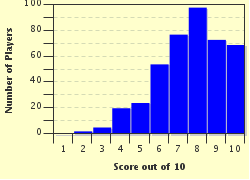Quiz Answer Key and Fun Facts
1. The word "astronomy" comes from the two Greek words meaning what?
2. The ancient Greeks were not the first scientists who made contributions to modern astronomy.
3. The ancient Greek, Pythagoras, who is really more famous in another field, is considered to be the first to recognize that "Hesperus" and "Phosphorus" were actually the same planet. Which planet was that?
4. The ancient Greeks were able to see five planets with the naked eye. Which planet on this list cannot be seen without an optic aid?
5. According to NASA, this planet is the coldest in our solar system, and was named after the Greek god who was the father of the Titans. What planet is it?
6. An ancient Greek name for Polaris was "Cynosura", which meant what?
7. In the earliest Greek literature, the "Iliad" and the "Odyssey", Homer referred to several celestial objects. Which one of the following did he NOT mention?
8. Sometimes known as the "Greek Copernicus", Aristarchus proposed a theory whereby the Sun, not the Earth, was the center of the universe. What was this theory called?
9. The ancient Greek, Hipparchus, was the first to accurately calculate this event that occurs when one celestial body is partially or totally blocked by another. What is this phenomenon called?
10. The ancient Greek, Hipparchus, also discovered what is called the "precession of the equinoxes". Axial precession is the movement of the rotational axis of an astronomical body, where the axis slowly traces out which shape?
Source: Author
ponycargirl
This quiz was reviewed by FunTrivia editor
CellarDoor before going online.
Any errors found in FunTrivia content are routinely corrected through our feedback system.

